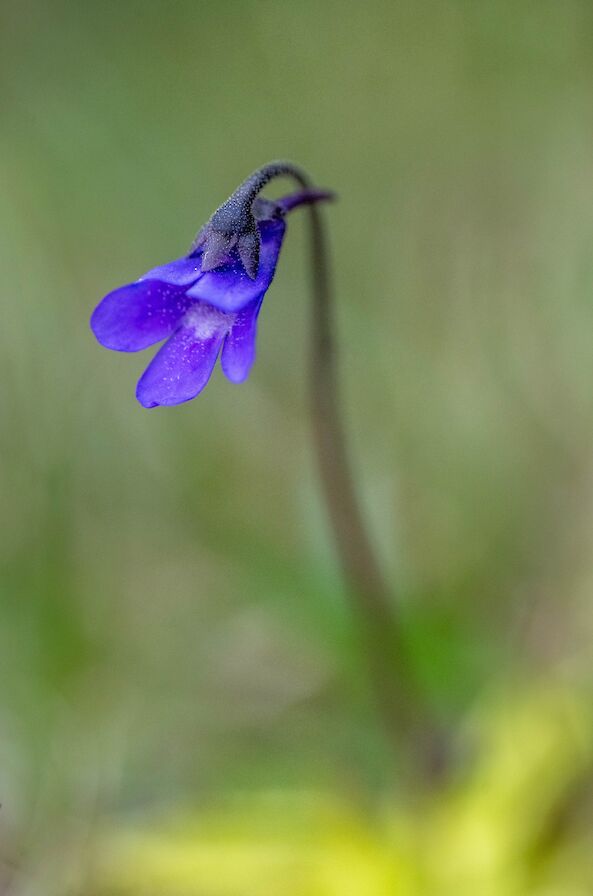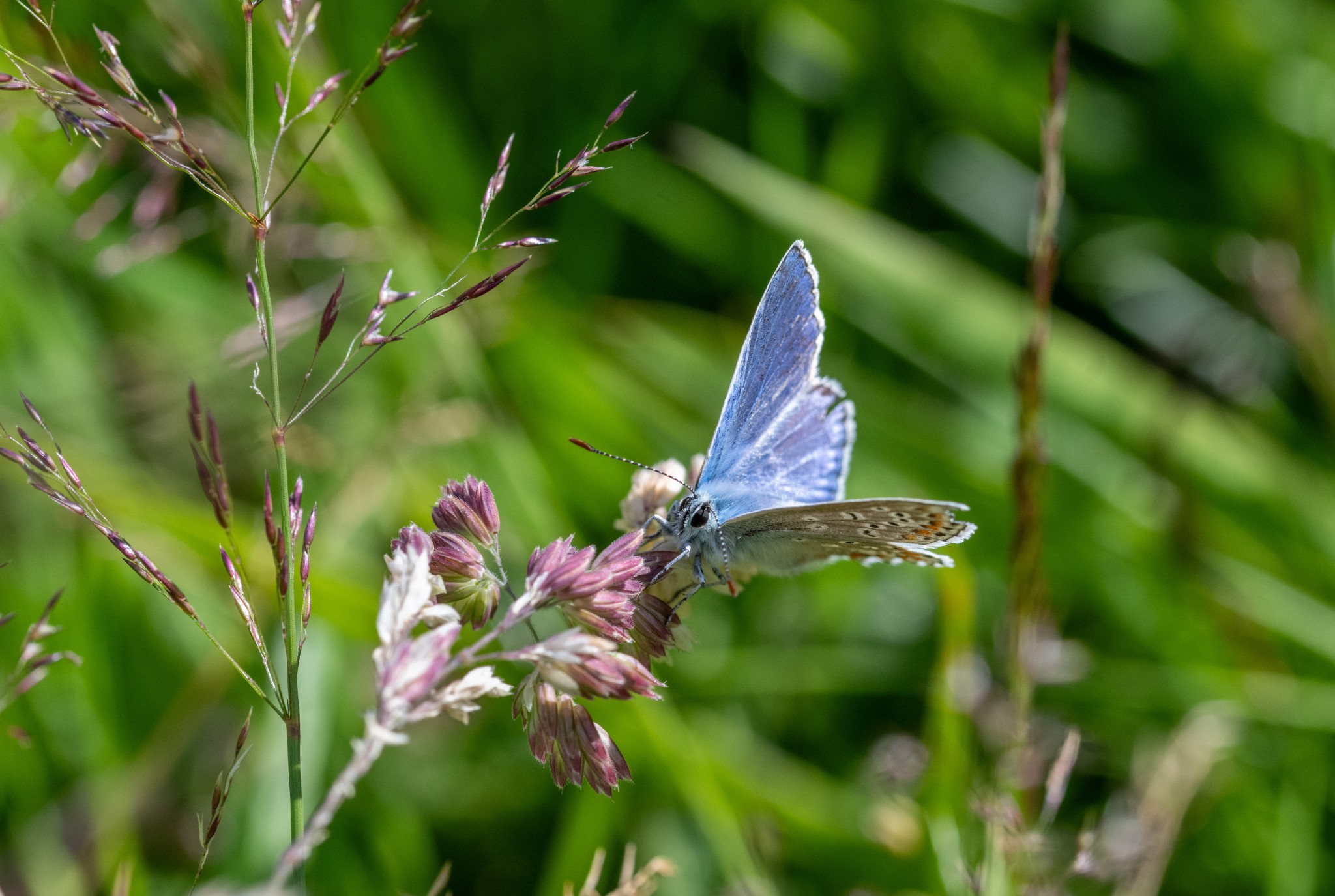There’s only a ripple on the water from the warm breeze when I arrive at Kirbister Loch.
This shallow loch lies amongst the gentle hills of Orphir and holds a lot of nostalgia for me. In my teenage years I used to fish for brown trout here until guilt got the better of me. I confess I miss it, not the actual catching, but the act of casting a fly rod which felt therapeutic.
There are certain things I associate strongly with Kirbister Loch; the wailing call of the red throated diver, the flitting flight of common sandpipers, and the fresh smell of the loch-side vegetation. But most strongly of all is the memory of great swathes of cotton grass, swaying amongst the heather as far as the eye could see.
A stonechat makes its presence known, the unmistakable sound of two stones or pebbles being hit together, ‘chack, chack’, as it flies between fence posts. I can see some movement under the water’s surface and wonder what the brown trout are feeding on - this loch was rather famed for holding lots of small trout, well, that’s what I seemed to catch most of the time anyway!
I have my labrador Lyra with me and this terrain is right up her street, with peaty ditches she can run in and out of. I have this idealistic or romantic view of how I would like our relationship to be, more specifically our photographic relationship, one where she sits next to me whilst I photograph. This is of course completely unrealistic given that I mostly photograph wildlife and is also unfair on any wildlife nearby. It is achievable however if I’m doing landscape photography.
I can see a beautiful area of heather moorland that is thick with cotton grass and I position myself so that it will eventually be backlit by the setting sun. I fear I’m a little early though as the sun is still high in the sky. So, we settle in a good spot and it’s not long before Lyra is sitting crossed legged beside me.
I photograph periodically and I can see that the light is becoming softer. As much as I love this scene it’s not to say that it’s easy to make images. With so much vegetation it makes for ‘busy’ pictures and I do like simplicity. One way for me to achieve this is to use a long telephoto lens. Unusually for me I’m using a tripod, but the 500mm lens is pretty heavy to use handheld.
I choose a wide aperture so that I can make a nice soft background whilst the cotton grass heads I want to stand out will make for some nice shapes. Shooting through the cotton grass, with their fluffy white heads, softens the image even more. Looking towards the loch the setting sun bounces off the water and the whole scene looks like deep bronze and gold.
I sit a while with Lyra and it’s nice to feel contented, but it’s time to go. It’s not long before the temperature drops now that the sun is hidden in the west. Tomorrow I’ll go in search of some other moorland specialists.
I’ve never been to the Knowes of Trotty before, hidden at the foot of some moorland hills in Harray. I can see that there are plenty of photographic opportunities here. I love areas like this, where farmland meets the hills, with damper areas full of flowers. A male hen harrier floats past, no doubt on the lookout for meadow pipits which seem plentiful here.
There’s a wonderful display of bogbean here in the wet ground, growing side by side with horsetails. The odd, complicated, pink and white flowers of the bogbean attract the attention of some green veined butterflies. Moving slowly along the path is something that always brings a smile to my face, the sight of a ‘wooly bear’ caterpillar. Dark amber beneath, black above with long greyish hairs (hence the ‘wooly’ name), this large caterpillar will eventually turn into an equally striking moth, the garden tiger moth.
But what I’m particularly pleased about is seeing the presence of one of my favourite plants, butterwort. I much prefer this name to one of its others, the bog violet. They line the path on either side and some are already heading past their best.
Many of their bright lime curled leaves are expertly doing their jobs as they are full of flies, the butterwort of course being one of our insectivorous plants. Its bright violet and complicated flower on a long stalk make this a challenging flower to photograph as anything other than a record shot. But not everything needs to be in focus in order to reveal its form and I experiment with different apertures to get the effect I want.
Another flower here, commonly found in the same habitat, is the lousewort and I’ve been unable to photograph it in a way I’ve ever found pleasing. The pink flowers are an awkward shape and no matter what I try I don’t like it, the closing pink colours irk me a little.
As I head back to the car, I spot a brown hare in a barley field, the new green shoots no doubt irresistible for this lagomorph. Brown hares are widespread across the Orkney mainland but not in any great numbers so it’s unlikely to have any great effect on this field.
I hate to say it but the vegetation at my next walk already has the look of the end of summer about it. Nonetheless it’s a beautiful scene - the wind is strong and the sun bright as the seed heads sway back and forth. Such is their profusion the field in front of me looks almost entirely purple.
There’s a commotion nearby, albeit a tiny one. Two wrens are looking after their newly fledged family of chicks, distinct from the parents as they still have the waxy looking yellow vestiges of their gape, which was used to attract the attention of their parents when getting fed. In truth they also look a little scruffy!
An eider duck corrals her ducklings along the shore below me, a passing great skua briefly causes her some concern but the skua passes past quickly. There are countless meadow brown butterflies here but they are an absolute devil to photograph. In fact, I don’t manage at all. They are very active in the sun and on the rare occasion they do settle it’s only a moment before another one dances past and disturbs it before I can focus on it.
I have better luck with the common blue butterflies, most of them appear to be males and they seem to like the clover and grasses along the path. Having drawn a blank with the meadow browns, a common blue lingers long enough for me to see its exquisite striped antennae and to leave happy having made a few frames of the flighty invertebrates.
Find out more about Raymond’s work via his official website. You can also find him on Facebook, Twitter and Instagram.





